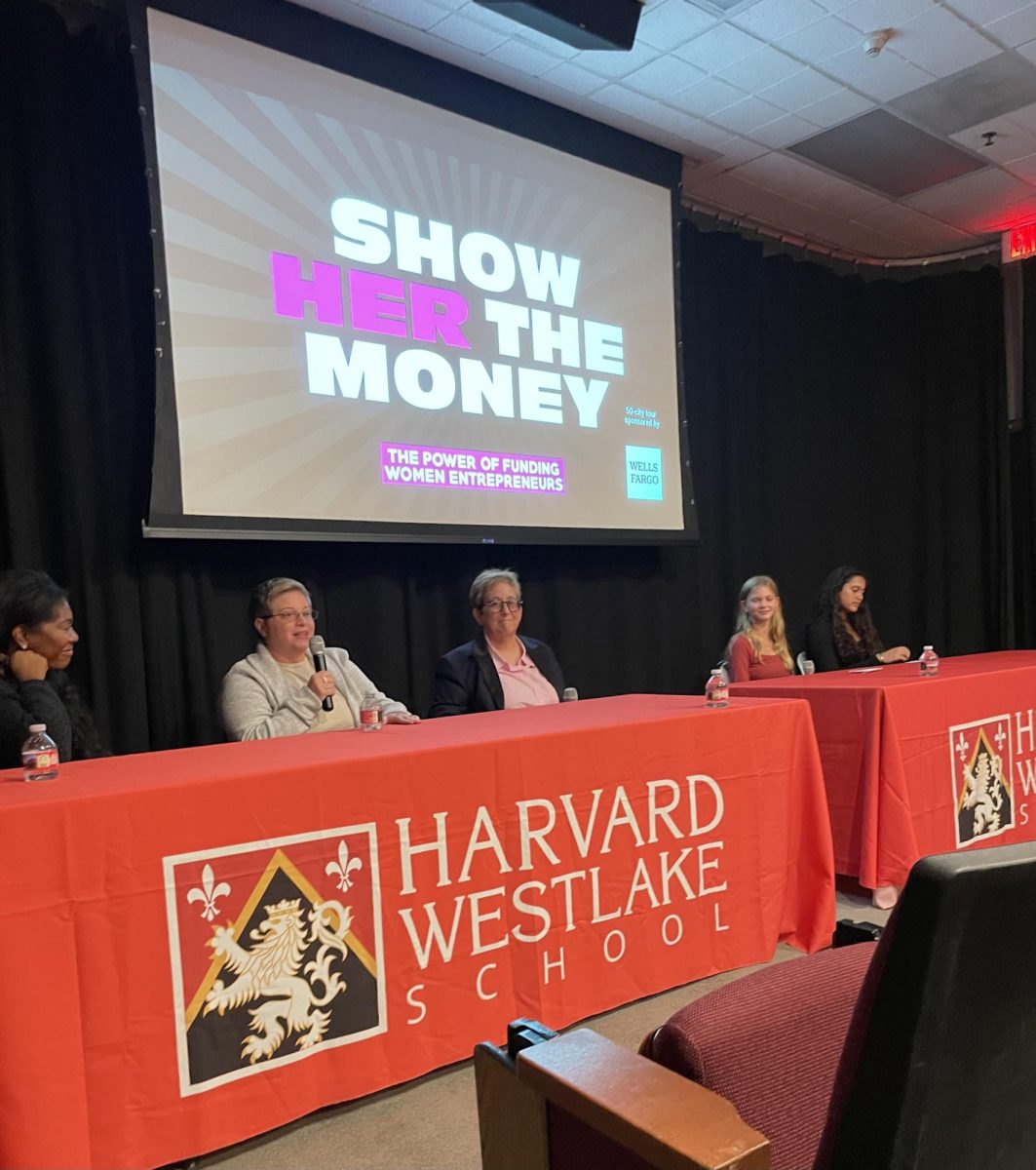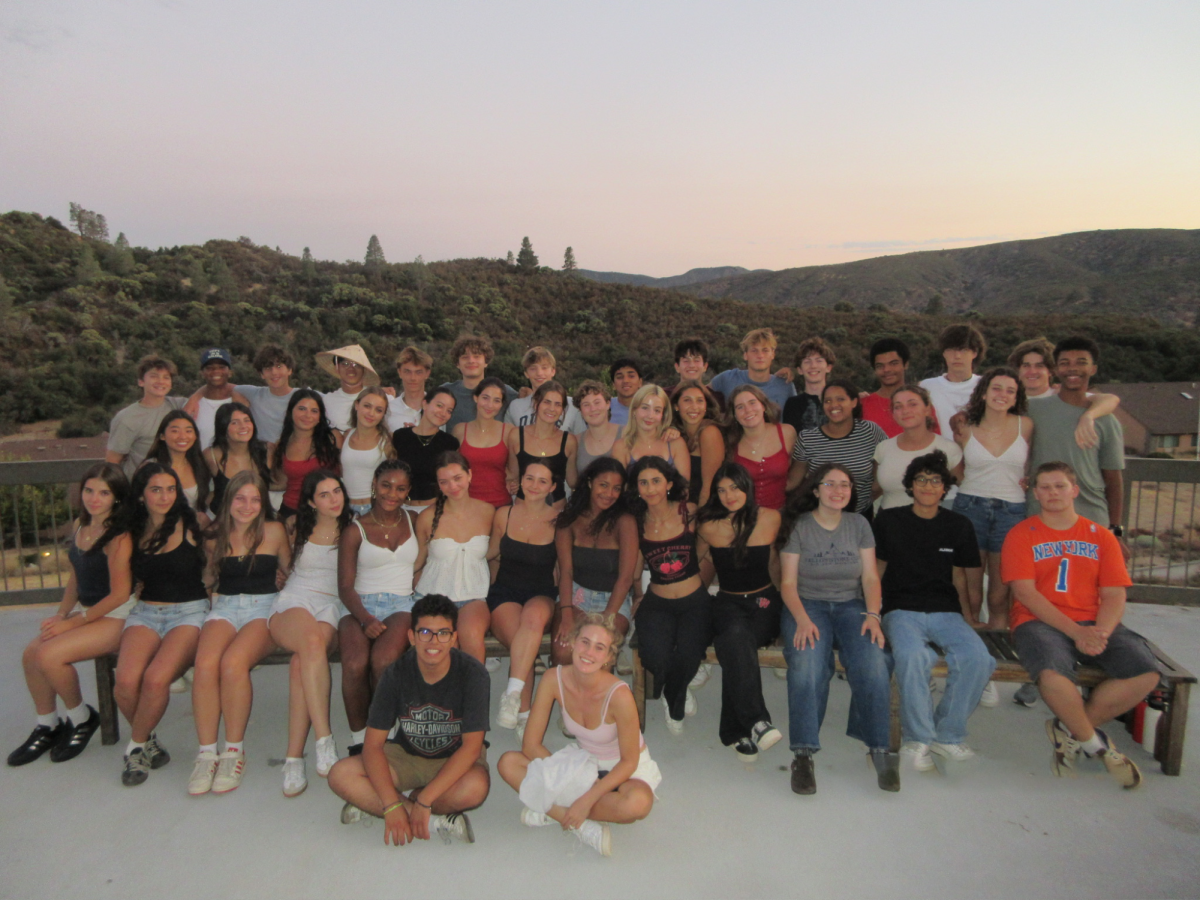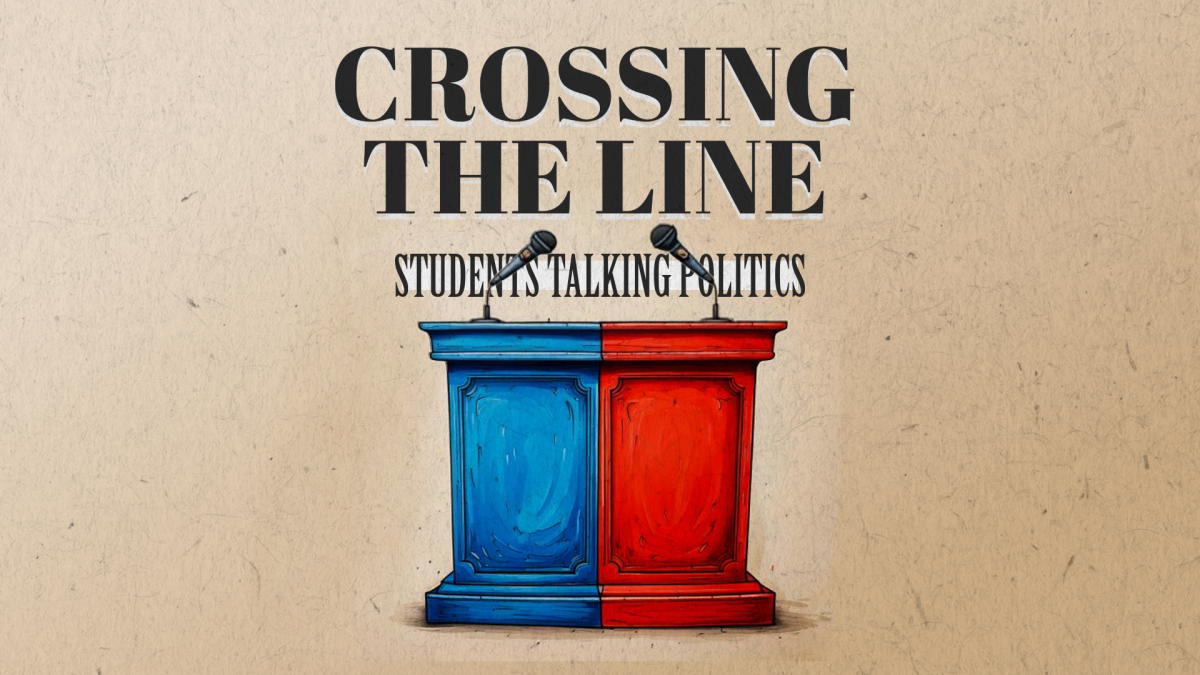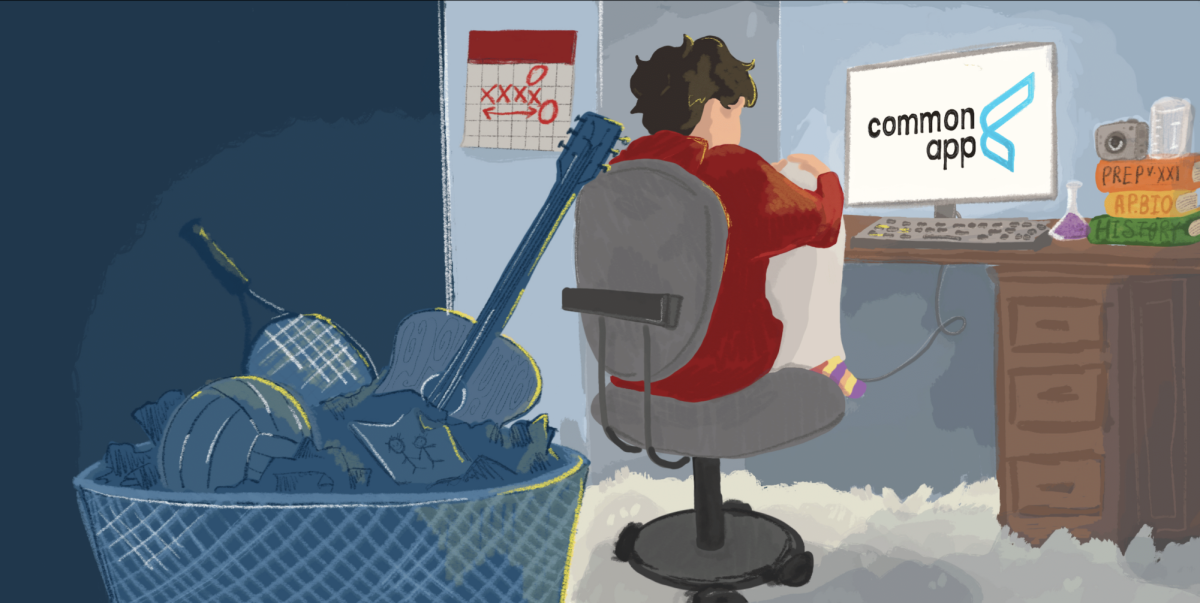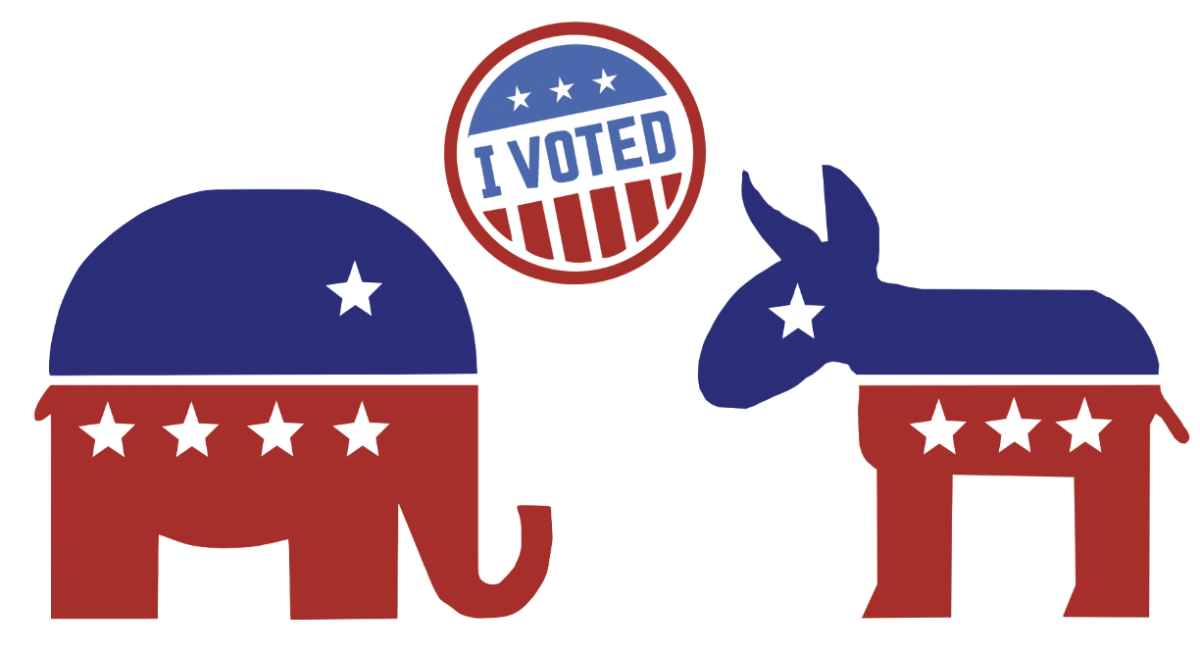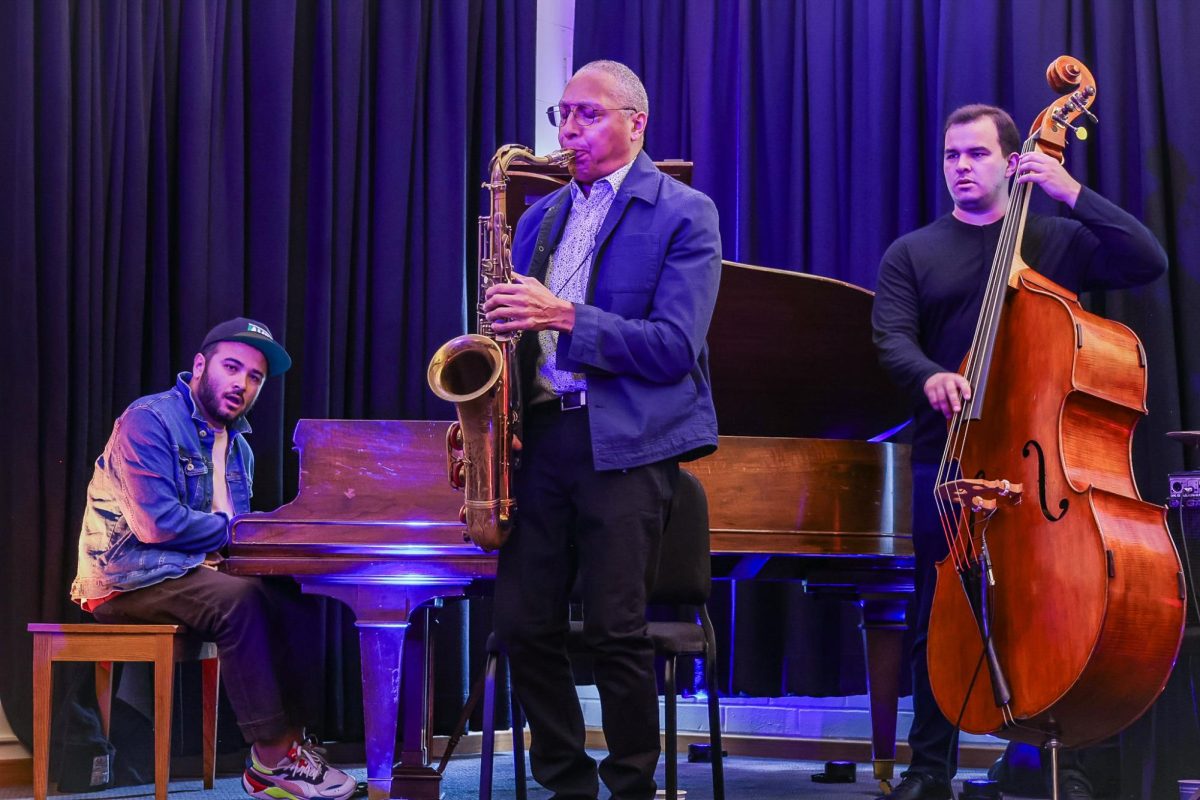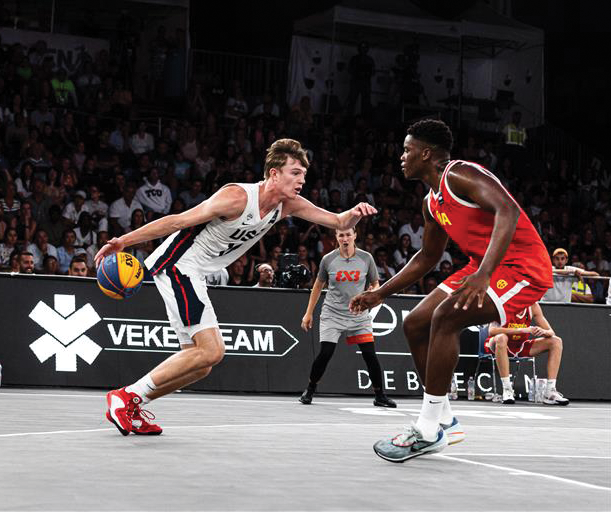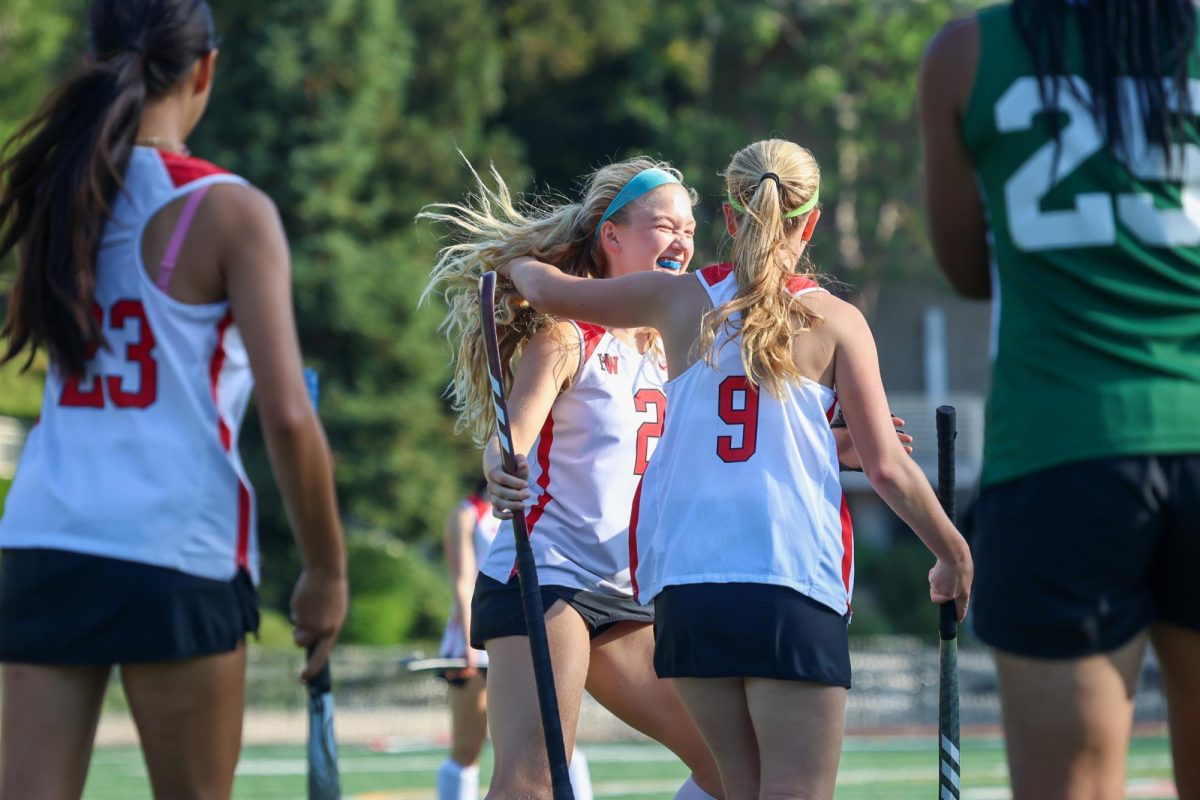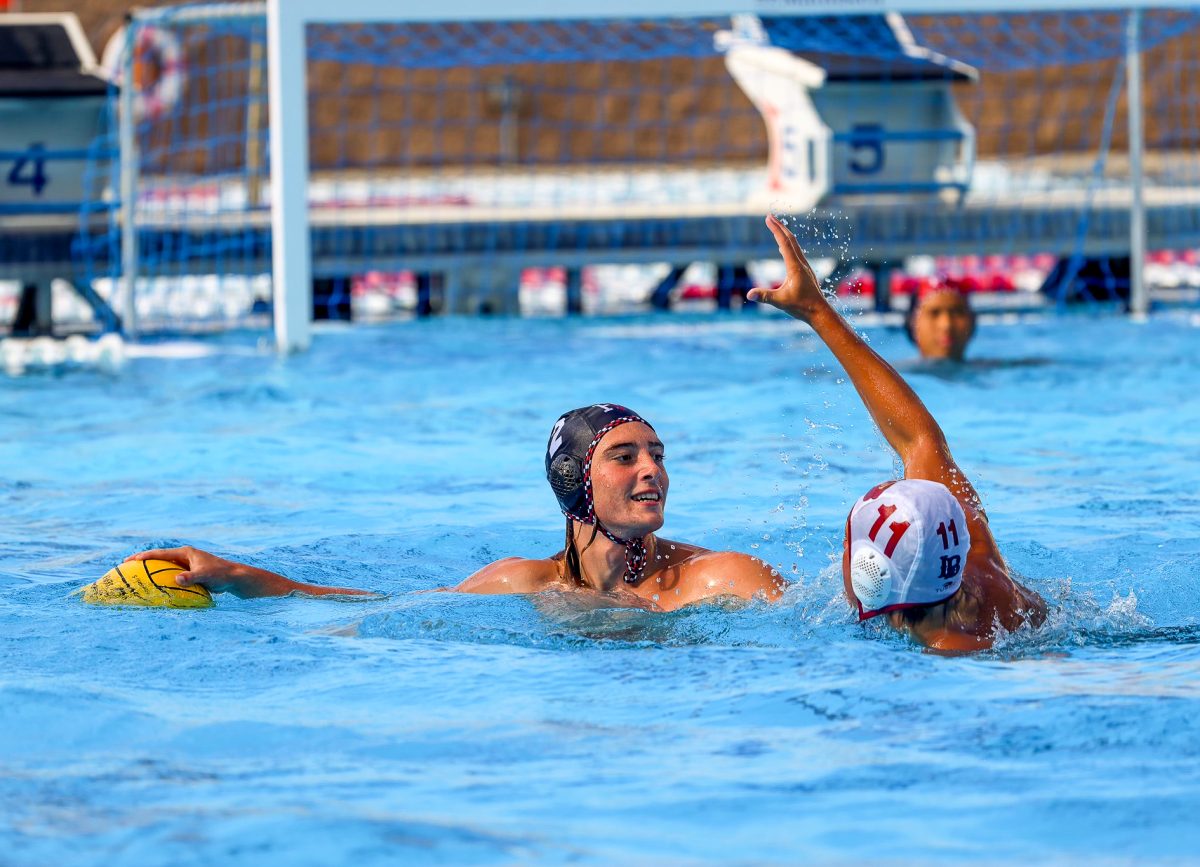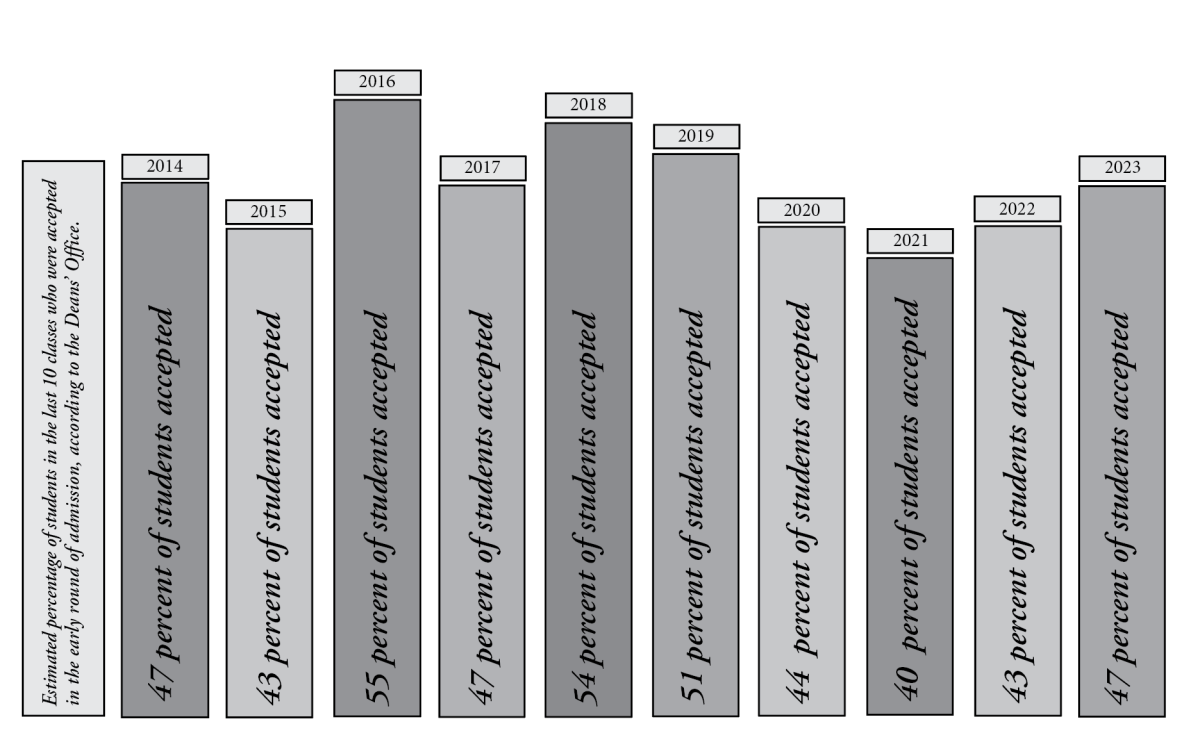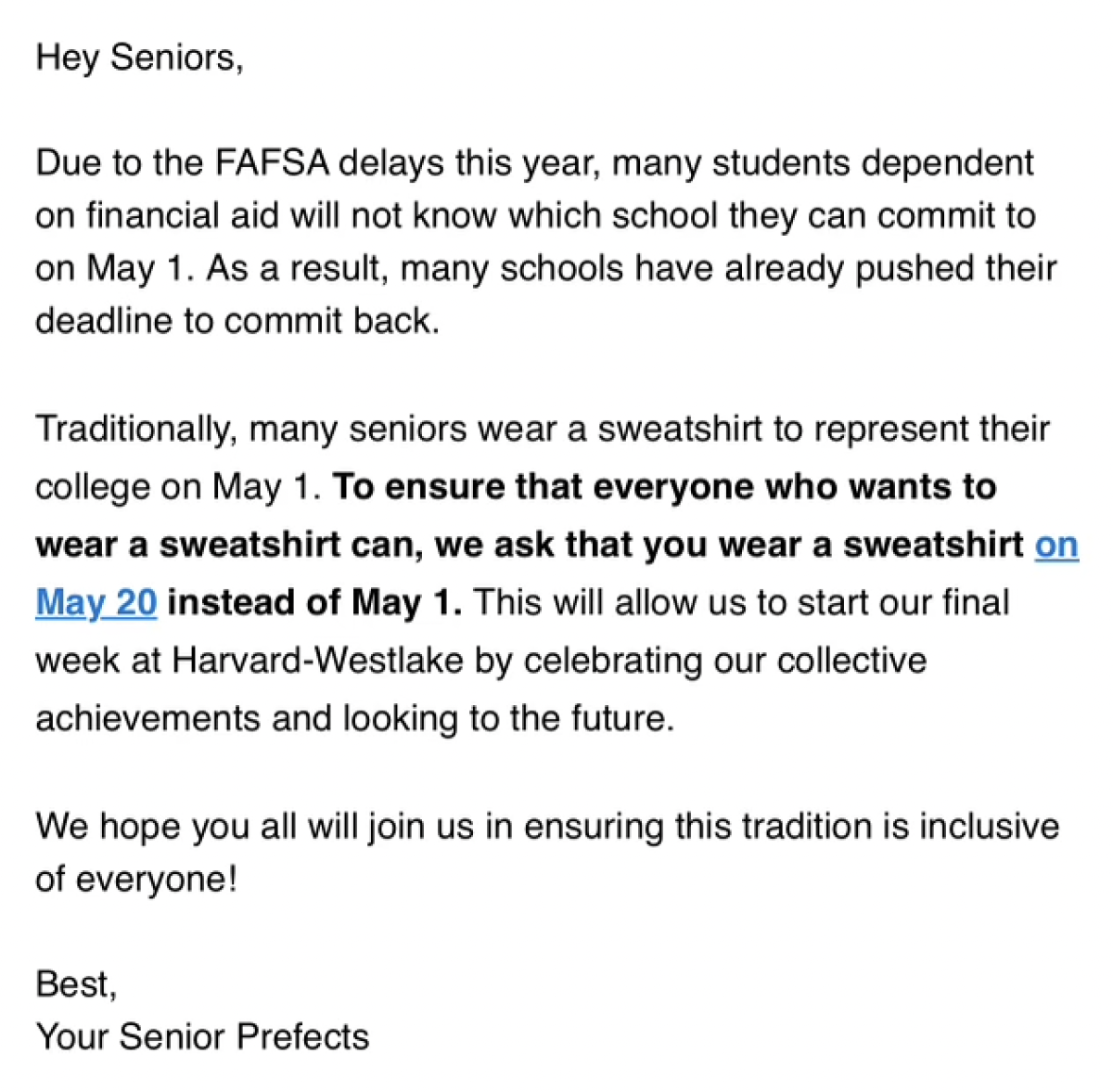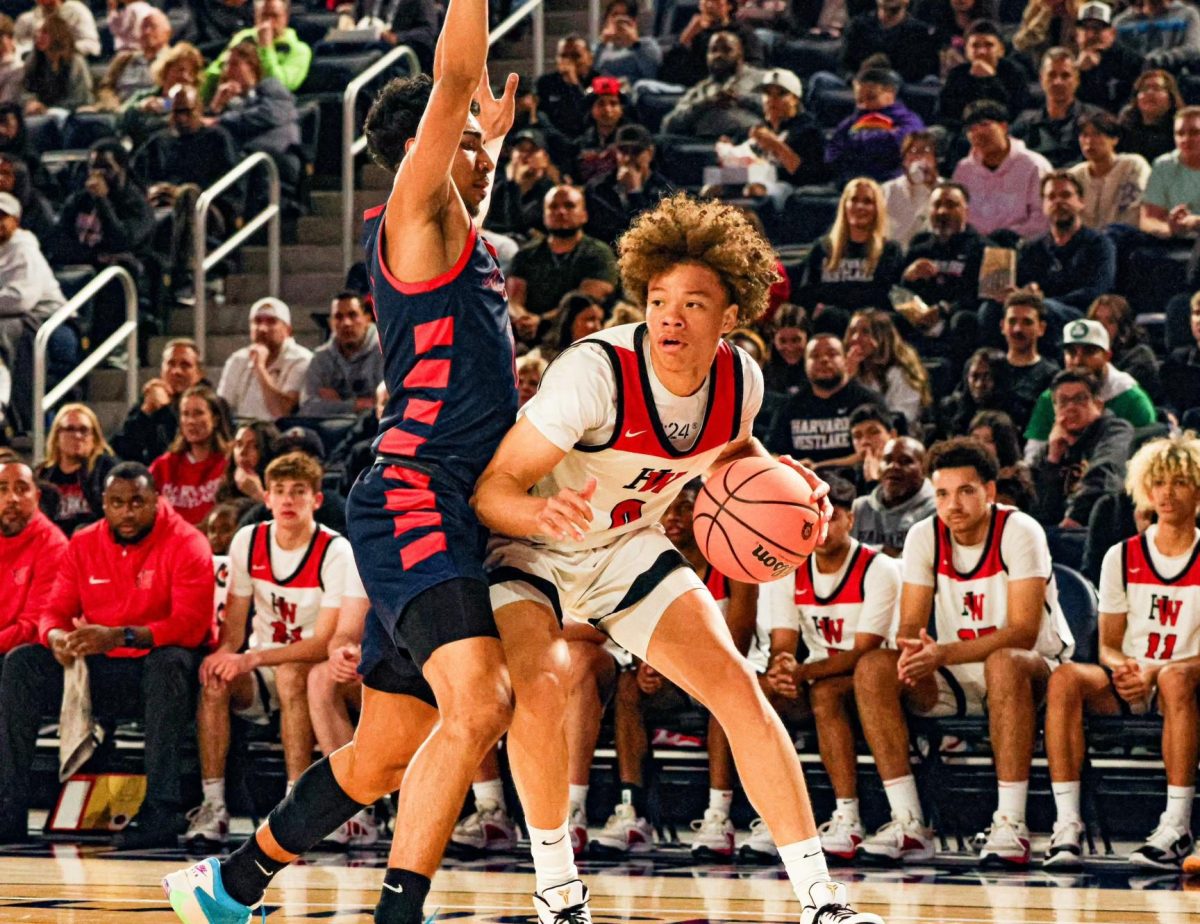The Class of 2024 received their early admissions decisions last December, with 51 percent of the students who applied early applying to the same 14 schools, according to the Deans’ Office. There were 206 total students in the class who applied either Early Decision I (EDI), Restrictive Early Action (REA) and Single Choice Early Action (SCEA) to various colleges. The school could not provide exact statistics regarding the early acceptance rates of the senior class.
The 14 schools include the eight Ivy League schools in addition to Duke University, Georgetown University, the Massachusetts Institute of Technology (MIT), Northwestern University, Stanford University and the University of Chicago, according to Head of Upper School Beth Slattery.
Slattery said students’ decisions regarding where to apply early are often influenced by the previous class’s matriculation.
“Last year’s class did so well, and that emboldened people,” Slattery said. “That’s a cycle we’ve always seen. When one class does well, the next class thinks everybody will get in. The other thing is that more than half of [the] class applied early to 14 schools, and those 14 schools are the most selective schools in the country. Most of these places, even if they’re nice to us, are not going to take 20 kids.”
Slattery said for some students, applying to top colleges is not a good use of the early decision process and ends up making the regular round more competitive.
“For plenty of those kids, those schools are legitimate options, and it just didn’t work out,” Slattery said. “But for some kids, it was not a good decision, and they went against advice. It’s going to make regular [decision] a challenge because there’s lots more people left in the pool. [The seniors] all applied to the same places, so it just gets harder.”
Slattery said there is a possibility of grade inflation that has taken place over the past four years.
“There’s an argument to be made that grades could have felt inflated during the four years,” Slattery said. “Grades were certainly inflated during COVID, and I feel like the year we came back, they were also inflated. We froze grades last year, so I wonder if, for a lot of kids, their grades were better than they might have been. If your Grade Point Average [GPA] is really high, you might think you’re eligible, but you don’t stand out as much.”
According to a Chronicle article from December of the 2022-2023 academic year, the school made the decision to add weighted GPAs back to transcripts to help students distinguish themselves in college admissions. The school had removed weighted GPAs for the Classes of 2022 and 2023. They reintroduced them onto transcripts for the Class of 2024 along with unweighted GPAs, making this year’s seniors the first in two years to apply to college with both GPAs on their transcripts. Despite this, Upper School Dean Sharon Cuseo said the change had no impact on admissions during this year’s early cycle.
“The colleges have access to the same information [regarding grades] that they always have,” Cuseo said. “We are just now making it easier for them to use whatever [GPA] is going to be most helpful. There is no world in which they didn’t care as much about rigor. They figured it out on their own when we didn’t provide [weighted GPAs] and they figured out unweighted [GPAs] on their own when we didn’t provide that. We’re just now making it easier so that they don’t jump to conclusions.”
In addition, the school recently implemented maximums for the amount of Advanced Placement (AP) and Honors classes that students can take. The original policy went into effect at the beginning of the current seniors’ sophomore year. It allowed two, three and four APs for sophomores, juniors and seniors, respectively. The new policy, which went into place this fall, the Class of 2024’s senior year, changed the limit for sophomores to three APs and honors courses, while juniors and seniors can take a maximum of five APs and honors courses.
Cuseo said people view each admission cycle differently based on what schools students choose to apply to.
“Overshooting is something the deans talked about,” Cuseo said. “We felt that individually, they could have made better, more realistic choices, but as a whole, they didn’t apply to a wide range of schools. Every year is usually a pretty good year, and people get into amazing places. But what determines the perception of the year is where and when people choose to apply.”
REA is non-binding, meaning that if a student is accepted early, they may apply to other schools in the regular round. ED, on the other hand, is a binding agreement, meaning that if a student is accepted, they must attend the college or university. Cuseo said part of her job as a dean involves making sure that students do not regret their choice of ED or REA.
“Before they submitted their applications, we did bring up to kids that they should look at different schools,” Cuseo said. “But at the same time, when students have done well and have strong grades, it’s hard to say they don’t deserve to try for something hard. That conversation is about minimizing regret. For some students, the regret is gonna be that they didn’t get in, and for some, it’s gonna be that they didn’t go for it. It’ll be different for different students.”
The school uses a platform called College Kickstart to provide students with information about their college choices. It utilizes data from past students at the school and classifies schools into “likelies” where a student has a 75 percent chance of being accepted, “targets” where a student has a 50 percent chance of getting accepted, “reaches,” where a student has a 25 percent chance of being accepted and “unlikelies” where a student has a less than 1 percent chance of being accepted. President Rick Commons said it has become increasingly difficult to categorize schools into one of these four labels.
“Back in the 1990’s, when I was a college counselor, [the process] was much more predictable based on somebody’s record, grades, scores and activities,” Commons said. “Over the last several years, it has become almost impossible to know. We used to say ‘Here are your likelies, here are your 50-50’s, here are your reaches and here is what’s out of reach.’ We could predict that, and the families and students could predict from [the information] that was there. So if a student didn’t get into a college that we had said is out of reach, we told you it was out of reach, and we were right on. If we said it was likely, we’d almost always end up with a yes. That’s become much harder, so it was a frustrating fall for all of us watching what has happened.”
Students who are not accepted during the early round are either denied or deferred. If they are deferred, they are reconsidered for the school during the regular round. Slattery said there were fewer deferrals this year because colleges are changing their approach to the admissions process.
“Another thing that was surprising to me were the denies,” Slattery said. “Part of that is a shift philosophically, and that doesn’t have anything to do with [the seniors]. I think that has to do with more colleges not deferring people they know they’re not going to take. I feel like people who got deferred might feel a little bit better because it probably was authentic, as opposed to some years where it’s just a courtesy.”
Students have the opportunity to apply Early Decision II (EDII) to a limited number of schools. Applications for these schools are usually due in early January, and students hear back in February and March. Cuseo said there is a common understanding among students that the deans are encouraging students to apply EDII.
“Advising kids about [applying EDII] is always hard because you don’t want to just grab onto whatever feels like a sure thing in the aftermath of a disappointment,” Cuseo said. “There is a perception that the deans are pushing EDII. The truth is for some of these schools, EDII is the only way, and that was the conversation. It wasn’t that everyone had to EDII somewhere.”
Sophie Bobb ’25 was a sophomore when her older brother, former Sports Editor Jaden Bobb ’23, applied to college. She said seeing this year’s college results made her realize that her brother’s grade had performed extremely well.
“The fact that this year’s seniors didn’t do well makes me feel relieved because I had such high expectations, and I was getting kind of nervous because there’s no way I [could] live up to that,” Sophie Bobb said. “But now I’ve realized [the Class of 2023] was just a special case, and this year is more realistic. It’s helping me gauge what is realistic. I’ve learned a lot from them.”
Slattery said she hopes more students will listen to their deans’ advice so as to prevent unrealistic decisions.
“I wish more people would listen to the deans,” Slattery said. “Nobody delights in having it go poorly. That’s not fun for anyone. Deans don’t want to spend their winter break talking about this, and they love [their students]. So when they give advice about a school not being the best use [of an ED application], and people interpret as ‘You don’t support me,’ the truth is that support doesn’t look like telling you what you want to hear. It looks like managing expectations and maximizing opportunity.”
Commons said students are well-prepared to attend any school and should have the option to go to whichever university they want to attend.
“I am thrilled for those who got good news and disappointed for those who did not,” Commons said. “I feel a sense of unfairness when students who are incredibly prepared and have worked hard don’t have the options that they deserve. As much as there was a lot of good news in the fall, there was also a lot of bad news. It feels to me that Harvard-Westlake students should be understood by all colleges to be better prepared than your average applicant, [but] I am biased. While it has always felt to me that Harvard-Westlake students should have all the options, the unpredictability of it is frustrating.”
Slattery said she expects this year’s matriculation to end up similar to past years.
“Ultimately, people are going to end up fine,” Slattery said. “There’s going to be people who get exactly what they wanted, people who didn’t get exactly what they wanted but got something good, people who got something good but are still disappointed and people [who] are understandably disappointed. That number of understandably disappointed people is very small every year. It’s all going to be okay.”

